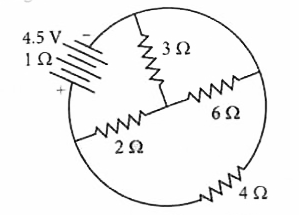A conducting ball is positively charged and another positive point charge is brought closer to the ball.
the ball may attract the point charge
the ball may repel th point charge
there may be no force between them
the ball will only repel the point charge and in no condition it can attract the point charge
The correct Answer is:A, B, C
Due to induction there will be shifting of charge on ball and force can be of any type depending upon the relative charge on them.
Topper's Solved these Questions
- COULOMB LAW AND ELECTRIC FIELDBOOK - CENGAGE PHYSICSCHAPTER - COULOMB LAW AND ELECTRIC FIELDEXERCISE - Comprehension
25 Videos
- COULOMB LAW AND ELECTRIC FIELDBOOK - CENGAGE PHYSICSCHAPTER - COULOMB LAW AND ELECTRIC FIELDEXERCISE - Integer
8 Videos
- COULOMB LAW AND ELECTRIC FIELDBOOK - CENGAGE PHYSICSCHAPTER - COULOMB LAW AND ELECTRIC FIELDEXERCISE - Single Correct
47 Videos
- COMMUNICATION SYSTEMBOOK - CENGAGE PHYSICSCHAPTER - COMMUNICATION SYSTEMEXERCISE - QUESTION BANK
19 Videos
- Current ElectricityBOOK - CENGAGE PHYSICSCHAPTER - Current ElectricityEXERCISE - QUESTION BANK
40 Videos
Similar Questions
An electric dipole is kept fixed at a location. A positive point charge is brought near the dipole. What will be the maximum number of null points by placing point charge at appropriate location with respect to electric dipole?

View SolutionA conducting ball is given a certain charge and fixed at point P. An another point charge of mass 1 gm and charge 20μC when kept at Q (3m, 9m) starts moving with acceleration →a=(1.08ˆi+1.44ˆj)ms−2. The potential at Q is +720 volt. Calculate
(a) charge given to ball
(b) position of the ball.
View Solution
Knowledge Check
A positive point charge q is brought near a neutral metal sphere.
AThe sphere becomes negatively charges.BThe sphere becomes positively charged.CThe interior remains neutral and the surface gets non-uniform charge distribution.DThe interior becomes positively charged and the surface becomes negatively charged.An agent is moving a positively charged body towards another fixed positive charge. The work done by the agent is
ApositiveBnegativeCzeroDmay be positive or negativeWhat will happen to the strips of a positively charged electroscope when a positively charged and another negtively charged bodies with equal magnitude of charge are brought simultaneously in contact with the cap of a positively charged electroscope?
Amove apart.Bcome closer.Cremains uneffectedDCannot be determined
Two identical small conducting balls have positive charges q1 and q2 respectively. The force between the balls when they are placed at a separation is F. The balls are brought together so that they touch and then put back in their original positions. Prove that the force between the balls now, cannot be less than F.
View SolutionWhen a positively charged and another negtively charged bodies with equal magnitude of charge are brought simultaneously in contact with the cap of a positively charged electroscope, then the strips
View SolutionWhen a positively charged and another negtively charged bodies with equal magnitude of charge are brought simultaneously in contact with the cap of a positively charged electroscope, then the strips
View SolutionIf a positively charged particle and negatively charged particles are brought together, then force will be
View SolutionIf a positively charged particle and negatively charged particles are brought together, then force will be
View Solution
